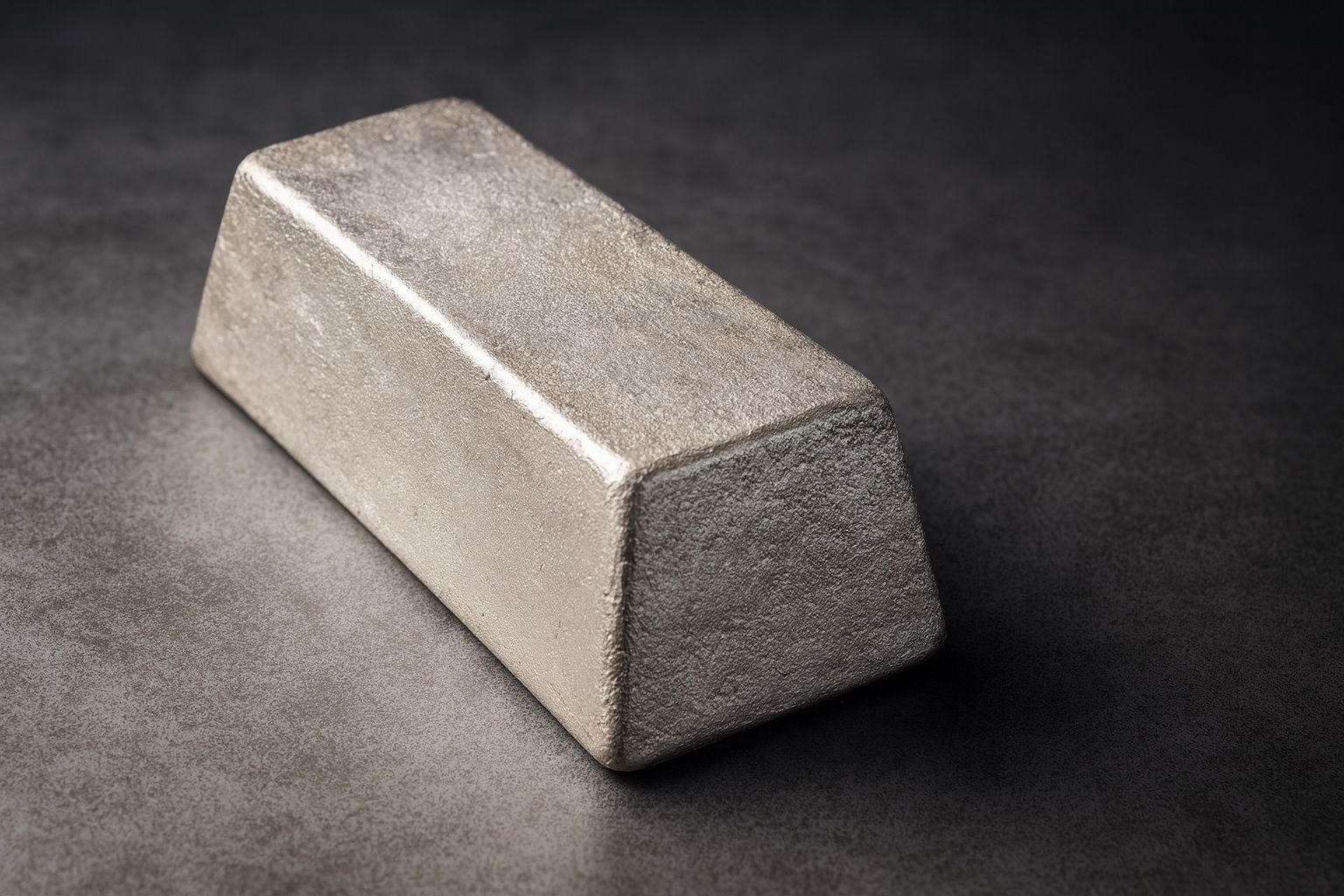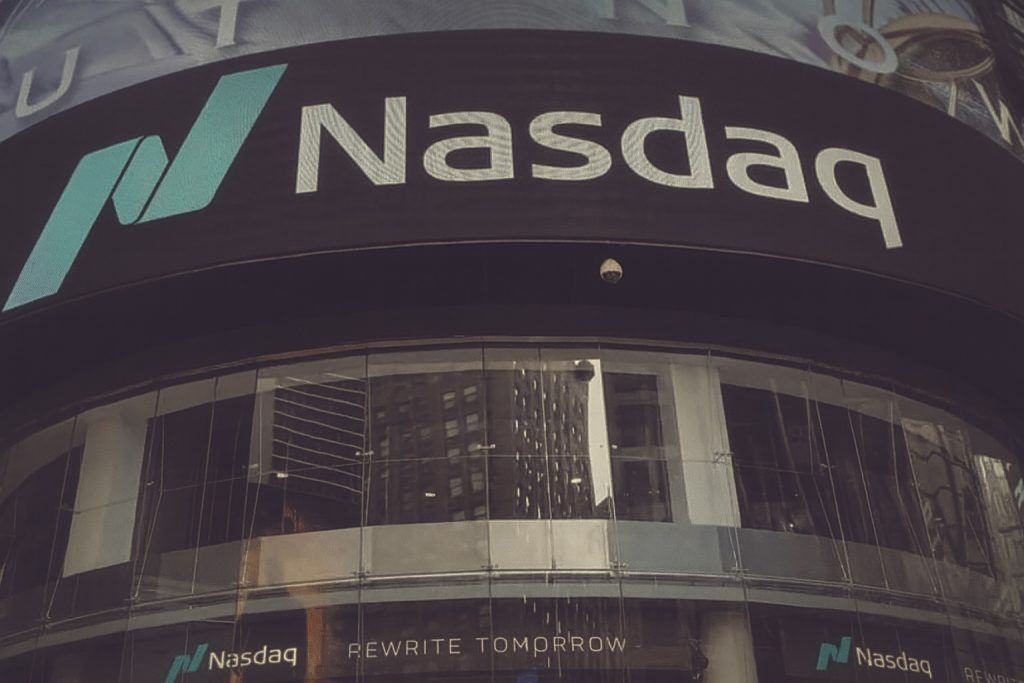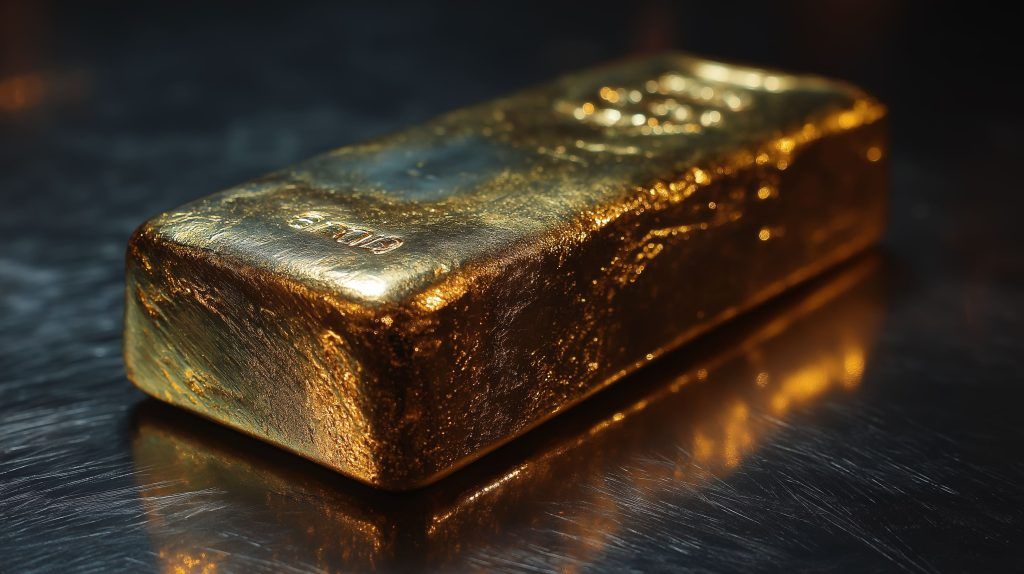Key Facts – October 18, 2025
- Silver at ~$52 after record spike: Spot silver prices hit an all-time high near $54.50/oz this week before a sharp pullback to around $51–$52 by the October 17 close [1] [2]. Despite the dip, silver remains up roughly 70% year-to-date on 2025’s rally [3].
- Wild week of volatility: Silver surged past the $50 mark for the first time since 1980, fueled by safe-haven demand, only to plunge 6% on Friday – its steepest one-day drop in six months – as profit-taking set in [4].
- Macro drivers in focus: Experts cite a “perfect storm” of factors behind silver’s rise – geopolitical tensions, inflation fears, Fed rate-cut bets, a weaker dollar, booming industrial demand, and tight supply – even as easing war and trade risks briefly cooled the frenzy [5] [6].
- Related investments rally: Silver-linked investments have skyrocketed. Physical silver ETFs saw record inflows, and silver mining stocks have far outpaced the broader market, with a global miners ETF up ~148% this year [7]. Leveraged silver funds have more than doubled in value [8].
- Mixed forecasts ahead: Analysts are split on silver’s next move. Many see short-term volatility around the $50 level [9], but fundamental bulls remain upbeat. HSBC projects silver in a $45–$53/oz range through year-end, while prominent investors like Peter Schiff even suggest prices “could reach $100” in a bullish long-run scenario [10] [11].
Silver Price Hits New Highs, Then Pulls Back
Silver’s ascent in 2025 reached a climax this week, as the metal briefly surged above $50 an ounce for the first time in decades. On Thursday, October 16, spot silver shattered its 2011 peak, spiking to about $54.5/oz intraday – an all-time nominal high for the metal [12]. This milestone came amid a furious multi-week rally in precious metals, with silver up over 70% year-to-date and dramatically outperforming gold’s gains [13]. By Friday the 17th, however, the market saw a swift reversal. Silver tumbled roughly 6% in its biggest single-day drop since spring, sliding back to the low-$50s [14]. It was last quoted around $51.9/oz in New York on Friday afternoon [15].
What triggered the sudden pullback? Analysts attribute the dip to a combination of profit-taking and a temporary easing of safe-haven urgency. After an explosive run, technical indicators flashed overbought conditions – a relative strength index reading signaled the rally may have been “too fast, too soon,” priming the market for a correction [16]. Meanwhile, news developments late in the week slightly cooled the fear-driven rush into precious metals. For one, concerns over U.S. credit and banking stability improved, and trade war anxieties abated, reducing the immediate demand for defensive assets like silver [17]. President Donald Trump’s conciliatory remarks on China trade helped “soothe anxiety” about tariffs, while strong earnings from U.S. banks lifted stocks and bond yields [18]. Rising interest rates tend to pressure non-interest-bearing assets, so silver and gold both saw some selling as yields ticked up.
Another key factor was an incremental relief in silver’s extreme supply tightness. A historic squeeze in the London silver market, which had driven spot prices dramatically above futures prices in recent weeks, began to show signs of easing. Traders rushed to arbitrage the gap – flying physical silver bars from New York to London – and a large one-day outflow from silver ETFs injected supply into the market [19] [20]. “The London shortage is alleviating somewhat… as dislocations smooth out, there could be pressure and profit-taking,” noted Nicky Shiels, head of metals strategy at MKS PAMP, explaining that the unwinding of an acute supply strain removed one pillar of support for sky-high prices [21]. In short, after touching record levels, silver succumbed to a healthy correction, ending the week a few dollars below its peak – but still vastly higher than just a month ago.
Expert Analysis and Market Forecasts
Even with turbulence in the past few days, market experts emphasize that silver’s fundamental uptrend remains intact. The consensus is that volatility will persist – not surprising given silver’s notorious boom-bust history – yet many analysts see room for additional upside if conditions remain favorable.
Reputable financial analysts have recently updated their forecasts in light of silver’s breakout. HSBC’s metals strategy team, for example, just raised its outlook and remarked that silver “stands on the cusp” of its old record [22]. The bank expects the metal to challenge the $50 threshold imminently and likely surpass it in the near term, although they caution that trade could be choppy. HSBC projects a volatile trading band between ~$45 and $53 per ounce through year-end [23] – effectively bracketing the current price zone. This implies the bank doesn’t rule out new highs above $50, but also sees the potential for swings back into the mid-$40s on profit-taking or shifting market tides.
Other analysts echo the view that $50 is a pivotal inflection point. Twice in modern history – in 1980 and 2011 – silver neared the ~$50 mark only to crash spectacularly afterward [24]. Those episodes (the Hunt brothers saga in 1980 and a post-financial-crisis spike in 2011) serve as cautionary tales: “Silver can be wildly volatile, prone to boom-and-bust cycles more than gold,” as veteran traders often note [25]. Today’s optimists believe “this time is different” to an extent, thanks to stronger fundamentals (more on those below). But even bullish commentators warn that $50 is a psychologically important level – breaching it could trigger waves of automated selling or “profit-taking” by investors who rode the rally up [26]. If silver punches through into fresh record territory and holds above it, however, technical analysts say there’s little overhead resistance to cap further gains [27] [28]. In that scenario, momentum buyers could pile in aggressively.
On the bullish end of the spectrum, some high-profile investors are making eye-catching predictions. Longtime gold advocate Peter Schiff argued that silver’s run may be just beginning, suggesting the metal could potentially double to $100/oz in the coming years if monetary and economic trends continue unabated [29]. Schiff’s rationale – detailed in a recent interview – is that relentless money printing and inflation will severely weaken the U.S. dollar’s value, in turn driving all hard assets dramatically higher [30]. While $100 silver is very much a minority view (and far above most institutional forecasts), it underscores the extremely bullish sentiment in some corners of the market following silver’s record-smashing rally. More mainstream analysts are not as aggressive, but still upbeat. For instance, State Street’s head of gold strategy noted that silver has been “playing catch-up” to gold’s move and could continue outperforming in the near term [31]. Many point out that silver has gained over 70% in 2025 – rising from the low $30s to around $52 – outpacing even gold’s stellar ~50% climb [32] [33]. “Silver is a bit of a catch-up trade,” as one strategist put it, with scope to run further now that it has broken out of a multi-year funk.
Importantly, market technicals indicate robust underlying demand. Notably, silver flipped into “backwardation” recently – meaning spot prices are higher than futures prices, a rare situation for precious metals. This reflects scarce immediate supply and eager buying in the physical market. “Silver’s backwardation is a loud signal – physical demand is crushing paper supply,” explains Alex Ebkarian, COO of Allegiance Gold [34]. He says if this condition persists, “breaking and sustaining above $50 is very realistic.” [35] In other words, as long as buyers are willing to pay a premium for actual metal now (versus later delivery), it suggests the price strength has credible support.
Looking ahead, most economists and analysts foresee continued volatility but no fundamental reason for a sustained crash barring a major shift in the macro backdrop. “Gold and silver may need to consolidate further, but the primary drivers of the rally…remain entirely valid and keep the bullish outlook intact,” notes Tai Wong, an independent metals trader, referencing factors like global reserve diversification and massive sovereign debt levels [36] [37]. This sentiment – that the bull case for precious metals is still on solid footing – is widely shared even after this week’s rollercoaster price action.
Economic and Geopolitical Factors Driving Silver
Why has silver skyrocketed in 2025? Analysts describe a “perfect storm” of economic and geopolitical drivers that converged this year, creating ideal conditions for a silver price surge [38]. Several key factors stand out:
- Safe-Haven Demand Amid Turmoil: Ongoing global uncertainties have spurred investors to seek shelter in precious metals. Escalating geopolitical tensions – from conflict in the Middle East to renewed great-power rivalries – and fears of financial instability (e.g. banking sector strains) boosted silver’s appeal as a safe-haven asset, alongside gold [39] [40]. For instance, earlier this month the Israel–Hamas war drove a flight to safety, as did concerns over a potential U.S. government shutdown and even hints of a rekindled U.S.–China trade war. Each crisis has added fuel to the metals rally. (Silver often tags along with gold’s safe-haven moves, earning it the nickname “poor man’s gold” [41].)
- Interest Rates and Inflation: Shifting expectations around monetary policy have been a major tailwind. With inflation still above central bank targets and economic growth moderating, the U.S. Federal Reserve resumed cutting interest rates in 2025, after an aggressive hiking cycle last year [42]. The Fed delivered a 25 basis-point cut in September and is widely expected to cut again in late October and December [43]. These rate cuts – and anticipation of a looser policy stance – have pushed down real (inflation-adjusted) interest rates, which boosts the appeal of non-yielding assets like silver and gold [44]. At the same time, the prospect of easier monetary policy has weakened the U.S. dollar from its highs. Because silver is priced in USD globally, a softer dollar makes it cheaper for overseas buyers and tends to lift the price. In essence, falling real rates + a weaker dollar = bullish for silver [45]. Furthermore, while headline U.S. inflation had cooled to around 3% by late summer, many investors (especially inflation hawks like Schiff) expect a resurgence of inflation in coming years [46]. Such fears of currency debasement and exploding government debt have driven a structural bid into precious metals as long-term hedges [47].
- Industrial Demand Boom: Unlike gold, silver is both a monetary metal and an industrial commodity. About half of silver’s usage is tied to industrial applications – and this segment is surging. In 2025, demand for silver in electronics, solar panels, and green technologies has hit record highs, underpinned by the global transition toward clean energy and continued tech innovation [48]. Notably, silver is a key component in photovoltaic solar cells and 5G electronics. Robust industrial demand means that even outside of investor speculation, there is strong fundamental consumption of silver, which helps prop up its value [49]. Analysts point out that the push for solar energy (accelerating as countries invest in renewables) has created structural support for silver prices, distinct from the macro-financial drivers. This year’s economic reopening and manufacturing rebound also lifted demand for all industrial metals, silver included.
- Tight Supplies and Physical Squeeze: Perhaps the most critical factor in silver’s 2025 spike has been the mismatch between demand and supply. 2025 marks the fifth consecutive year of a global silver supply deficit [50]. In each of the past several years, silver consumption (jewelry, industry, investment) has exceeded the amount mined, drawing down above-ground inventories. Over the last five years combined, the cumulative shortfall is estimated around 800 million ounces of silver [51]. This year alone is projected to see about a 187 million ounce deficit as mining output remains flat [52]. A big reason is that new mine supply is relatively inelastic – much of silver is produced as a byproduct of mining other metals (like lead, zinc, copper), so higher prices don’t immediately spur a lot more silver-specific mining. This chronic supply tightness set the stage for a squeeze. As investor demand surged in 2025, available physical silver in key trading hubs became scarce. By early October, the London bullion market – a core vaulting center – was practically drained of readily deliverable silver, forcing sharp price premiums [53]. The price in London shot far above U.S. futures prices, a sign of acute shortage. One-month silver lease rates in London spiked to ~20%, reflecting how desperately traders were bidding for metal [54]. This squeeze fed a self-perpetuating rally: rising prices prompted more investors to demand physical delivery (fearing missing out or doubting paper claims), which further strained supply. Only once silver hit ~$54 and stories spread of emergency shipments of bars being airlifted to London did the squeeze start to ease [55] [56]. Still, the supply backdrop remains tight, and any new surge in demand could reignite scarcity premiums.
- Investor and Speculative Inflows: The 2025 silver boom has also been propelled by unprecedented investor buying. Exchange-traded funds (ETFs) and other investment vehicles have accumulated enormous quantities of silver this year. In the first half of 2025 alone, silver-backed ETFs added roughly 95 million ounces to their vaults, a record-high influx that brought total ETF holdings above 1.13 billion ounces (worth over $40 billion at current prices) [57]. These funds – popular with retail and institutional investors for gaining exposure to silver – essentially removed a large chunk of physical supply from the open market, contributing to the scarcity. Futures speculators have joined in as well. Net long positions in COMEX silver futures have more than doubled since late 2024 [58], indicating hedge funds and trading firms piling into bullish bets. All this points to red-hot investment demand acting as an accelerant for silver’s price. The flip side is that such fast money can reverse quickly, so it’s a factor in silver’s famed volatility. But so far in 2025, the wall of investor money has been largely one-way – into silver, amplifying the upward price momentum.
In summary, a unique blend of haven-seeking capital, monetary tailwinds, real-world industrial usage, supply constraints, and investment flows all converged this year. “It’s been a perfect storm for silver,” as one analyst described, with virtually every classic price driver aligned to push it higher [59]. Little wonder the metal went on a tear, reaching heights few imagined just a year ago.
Silver ETFs, Mining Stocks, and Other Investments
The silver price surge has been mirrored by outsized gains in silver-related investments across the board. Investors haven’t just been buying bullion – they have poured into ETFs, mining stocks, and leveraged products to ride the rally.
Exchange-Traded Funds (ETFs): Silver-focused ETFs experienced record demand in 2025. For example, the iShares Silver Trust (SLV), the largest physical silver-backed ETF, saw its holdings swell as investors used it as a convenient proxy for owning silver. Industry data shows global silver ETFs combined hold over a billion ounces of the metal now [60]. This massive hoarding by ETFs was both a consequence of rising prices and a contributor to them (by tightening supply). In fact, the buying was so intense that in some regions, it caused logistical strains – India’s Kotak Mahindra Bank temporarily halted new silver ETF investments at one point due to difficulties sourcing enough physical silver [61]. A precious metals trader noted that liquidity in London’s market became limited “due to ETF buying and metal being moved to the U.S.” [62], underscoring the role ETFs played in drawing silver out of the open market.
Investors who chose mining equities as their vehicle have also reaped extraordinary returns. Silver mining stocks tend to offer a leveraged exposure to the metal (since miners’ profits can grow faster than the commodity price), and in 2025 this leverage worked in bulls’ favor. Many silver mining companies’ share prices have doubled or even tripled year-to-date. As a group, silver miners have vastly outperformed broader stock indices. For instance, the iShares MSCI Global Silver Miners ETF, which tracks a basket of leading silver mining firms worldwide, has climbed over +148% in 2025 [63]. By comparison, the S&P 500 stock index is up only modestly on the year. Some individual mining stocks have done even better – especially junior and mid-tier miners with higher operational leverage to silver prices. This demonstrates how strongly equity investors have chased the silver theme. Even gold mining stocks joined the party to an extent (gold’s rally lifted those shares), but silver miners stole the show: they benefited from both gold’s record run and silver’s outperformance.
More exotic instruments saw amplified moves as well. Leveraged ETFs and ETNs – which aim to multiply the daily moves of silver or mining indexes – have delivered eye-popping returns (with commensurate risk). One example is the ProShares Ultra Silver (AGQ) fund, which targets 2× the daily silver price change. Thanks to silver’s steep climb, AGQ is up well over 148% year-to-date [64], essentially more than doubling investors’ money in under 10 months. Some leveraged miner products did even more – a 3× leveraged gold miners ETN was noted to be up around 740% at one point [65]. While such instruments are niche, their performance underscores the breadth of the precious metals rally and the substantial rewards for those who positioned correctly. Of course, leverage cuts both ways, and latecomers could face large losses if the sector reverses, but so far 2025 has been a banner year for all things shiny.
It’s also worth noting that traditional safe-haven assets like gold benefited alongside silver. Gold’s surge to record highs (above $4,000/oz for the first time) helped validate the precious metals trend [66]. Large gold ETFs (e.g. SPDR Gold Shares) saw significant inflows and are up nearly 50% on the year [67]. Some investors used paired trades – going long both gold and silver – while others favored silver for its higher beta. The gold-to-silver price ratio tightened markedly as silver outpaced gold. After years of trading at historically high ratios (meaning silver was relatively cheap vs gold), the ratio compressed to around the low-80s in 2025 [68]. This indicates silver strengthening against gold.
In sum, anyone who had silver exposure this year has likely seen strong gains – whether through holding coins and bars, owning an ETF, or buying mining stocks. However, the flip side is that these assets could all decline if the silver price rally reverses. That reality checked in on Friday’s sell-off: silver miner ETFs fell in tandem with the metal, and leveraged products magnified the drop (AGQ, for example, fell about 10% in one day [69] when silver slipped ~4%). Such moves are a reminder that while the upside has been lucrative, volatility remains a constant companion in the silver market.
Commentary and Price Expectations
Financial media and market commentators are abuzz with opinions on where silver goes from here. A scan of recent commentary from outlets like TS2.tech, Reuters, and Bloomberg reveals both optimism about silver’s prospects and caution about its instability.
TS2.tech, an analysis site, characterized the situation as “Silver Near $50 – Is a New Record Imminent?” just before the metal in fact broke to new highs [70]. In its coverage, TS2.tech highlighted that virtually all market analysts it surveyed were expecting an assault on the $50 level given 2025’s momentum [71]. They noted a widespread view that silver was finally catching up to gold’s rally, and pointed out that HSBC had upgraded its forecasts in anticipation of silver setting a new record [72]. The site also relayed bolder calls from silver enthusiasts who argue that a “decisive breakout above $50” could even ignite a “generational” price spike toward $75 or $100 if a physical shortage intensifies [73]. These bullish commentators believe that once a longstanding nominal ceiling is cleared (which silver just achieved by exceeding the 1980/2011 highs), there is little technical resistance to cap further gains [74]. Essentially, new price territory could breed a self-reinforcing rally.
However, TS2.tech and others also underscore the flip side: volatility and historical precedent. After its 1980 and 2011 peaks near $50, silver infamously crashed, dropping by double-digit percentages in short order [75]. This history has not been forgotten. “$50 is a crucial psychological barrier,” TS2.tech quoted veteran traders, “breaching it could trigger turbulence now just as it did in the past.” [76] The takeaway: even bulls advise vigilance, as silver’s price swings can be extreme. As if on cue, within days of reaching $54, silver’s quick 6% fall validated those warnings.
Major financial news outlets have also weighed in. Reuters, covering the precious metals surge, noted silver’s record run has been propelled by the same macro forces lifting gold – geopolitical tensions, central bank gold buying, massive ETF inflows, and expectations of Fed rate cuts [77] [78]. Their market reports frequently cited analysts observing that silver’s fundamental backdrop (tight supply, strong demand) gives credence to the rally [79]. In one piece, Reuters highlighted the unusual backwardation in silver as a sign that “physical demand is crushing paper supply” – a bullish indicator according to traders [80]. They also reported commentary that despite short-term gyrations, the broader bullish outlook remains intact due to factors like diversification away from fiat currency and growing global debt which drive investors into hard assets [81]. At the same time, Reuters coverage acknowledged the possibility of near-term consolidation. One economist from Capital Economics told the agency that given how rapidly prices ran up, “there is a risk of a short-term pullback… But over the next couple years, prices are likely to grind higher.” [82] This encapsulates a common view: short-run caution, long-run optimism.
Bloomberg’s analysis (as seen on Mining.com) struck a similar chord. Their commodities team pointed out that silver’s rally, while rooted in solid fundamentals, appeared overextended technically, with momentum gauges like RSI flashing warning signals [83]. Bloomberg also noted real-time developments such as the easing of the London squeeze and profit-taking by some investors, suggesting the market may cool off in the immediate term [84]. Yet, the same report lauded silver’s performance and context, calling it a “furious rally” that is part of a larger precious metals boom [85]. Importantly, Bloomberg reiterated that gold’s stunning rise (over 60% YTD) and silver’s even bigger jump (78% YTD to $51.5) have been underpinned by robust fundamentals – from central-bank buying to rate cut bets [86] [87]. In other words, this isn’t viewed as a mere speculative blip; there are concrete drivers behind the price levels.
From more opinionated corners, we have voices like Peter Schiff (mentioned earlier) who give an unabashedly bullish long-term take: he ties silver’s fate to gold’s and ultimately to the fate of fiat currencies. In his view, if gold can rise 10× over decades (as it has from $260 to $2,600), it could do so again, and silver would likely follow or exceed that pace [88]. Schiff’s prediction of $100 silver rests on a scenario of runaway inflation and loss of confidence in the dollar [89]. While many mainstream analysts find such extreme forecasts unlikely in the near future, these perspectives do influence a segment of retail investors and have contributed to the bullish narrative around silver this year.
Finally, commentary has also emerged about the opportunity and risks for investors at this juncture. Some market strategists say new investors should be cautious about “chasing” the rally now that silver has already risen so far, advising to perhaps wait for dips or use dollar-cost averaging. Others argue that if the underlying thesis (of looser monetary policy, inflation hedging, and industrial strength) is still valid, then any correction could be a buying opportunity rather than a reason to exit. John Hathaway of Sprott, for example, noted that despite their big gains, precious metal equities remain modestly valued relative to historical metrics, implying there may be more room to run [90] [91]. His stance suggests that institutional investors are not yet overly exuberant and may even add on weakness, lending support. Overall, the commentary landscape paints a picture of guarded optimism – acknowledging silver’s volatility and past busts, but also emphasizing the supportive environment and the possibility that this rally has further to go if the stars align.
Future Outlook: Short-Term and Long-Term
What’s next for silver after this dramatic run? In the short term, market watchers largely expect continued volatility around the $50 level. The recent whipsaw – from euphoria at $54 to a quick drop under $52 – might be a taste of things to come. $50/oz now serves as a key psychological support-turned-resistance. If silver stays above this threshold in the coming days, it would signal resiliency and could attract fresh buying. Technical analysts are eyeing the low-$50s as an important support zone; bulls are aggressively defending the $53 and $51 levels, which correspond to short-term moving averages and prior consolidation areas [92] [93]. A decisive break below ~$51 could trigger a deeper pullback – possibly into the high-$40s – which is where the next support band lies (and where long-term buyers might step in). On the upside, any break back above the recent peak ($54.86) would likely spur momentum traders into action, potentially carrying silver toward $55–$56 and beyond [94] [95]. In essence, the near-term outlook may be a tug-of-war between profit-takers and dip-buyers, resulting in choppy trading. Many analysts suspect silver will consolidate its gains in the coming weeks – digesting the big move – rather than simply sprinting higher in a straight line.
Critically, none of the fundamental drivers have gone away. As Tai Wong noted, the core reasons behind silver’s rally (like diversification out of fiat and high global debt) “remain entirely valid”, which “keeps the bullish outlook intact.” [96] Unless we see a significant change – for instance, a sharp rise in real interest rates, a large de-escalation of geopolitical tensions, or a surge in mine supply – the bias among many experts is that silver will be well-supported on dips. Even analysts expecting a correction generally view it as a temporary pause in a larger uptrend, not the end of the bull market. For example, Capital Economics foresees a possible short-term setback but still projects higher precious metal prices over the next couple of years as monetary policy eases [97]. This suggests that long-term investors might look past near-term volatility, focusing on the macro backdrop that could favor silver.
Over the longer term, the outlook for silver remains broadly positive, though opinions vary on just how high it could go and how fast. A conservative take from big banks might be that silver stabilizes somewhere above its pre-2025 range (say in the $30s or $40s) and then gradually appreciates if inflation and industrial demand continue to rise. However, many commodity strategists see a structural bull market underway, potentially lasting into 2026 and beyond. They point to the confluence of high global liquidity, currency debasement fears, and real-world demand growth as ingredients for a sustained uptrend. If global central banks keep interest rates relatively low (even as inflation percolates), precious metals could continue to attract investment as a portfolio hedge. In that scenario, it’s conceivable for silver to maintain prices at or above previous records and even notch new highs. Some forecasts from bullish research firms have set targets in the $60–$75 range within the next year or two, assuming the supply deficit persists and investor interest remains strong [98]. And as noted, the most bullish fringe believes triple-digit silver is not impossible in a scenario of a major monetary crisis or “generational” squeeze [99] – though that is far from consensus.
That said, risks to the long-term upside do exist. If the global economy finds firmer footing, risk appetite could shift back to equities and other assets, diminishing the appeal of safe havens. A significant tightening of monetary policy (for instance, if central banks reverse course and hike rates again to fight inflation) could also cap gold and silver prices by increasing the opportunity cost of holding them. Additionally, at extremely high price levels, demand destruction and supply response could kick in – industries might seek substitutes for silver if it becomes too expensive, and dormant mining projects could be revived, eventually easing the deficit. These factors could limit how far silver goes in the long run or at least introduce phases of retracement.
On balance, the future outlook for silver appears skewed to the upside, with caution. In the short term, traders expect range-bound action with possible spikes of volatility around key news (e.g. central bank decisions or geopolitical developments). Prices oscillating between the mid-$40s and mid-$50s wouldn’t surprise the market as it finds equilibrium after the breakout [100]. In the longer term, as we head into 2026, a majority of analysts believe the fundamental drivers – a world awash in liquidity, strong industrial consumption, and constrained supply – could support even higher silver prices than today. The path is unlikely to be linear, but dips notwithstanding, the precious metals bull cycle may have further to run. As one commodity desk quipped, “the bull trend is your friend – until the macro picture changes.” For now, silver investors are riding that trend, hopeful that 2025’s record run is not the end of the story, but rather the start of a new chapter for the long-undervalued metal.
Bottom line: As of October 18, 2025, silver stands around $52 per ounce, just off historic highs. The metal’s stunning rise this year has been driven by potent economic forces and voracious demand. While a period of cooling or correction is possible in the immediate term (and arguably healthy after such a steep climb), the broader outlook remains optimistic. Short-term traders brace for turbulence around the $50 mark, but long-term believers see silver shining even brighter in the years ahead, propelled by its dual role as a safe haven and an essential industrial material. In the words of one market strategist, 2025 has been “the year of silver’s perfect storm” – and many will be watching closely to see if the storm calms or intensifies as we move forward.
Sources: Recent market analyses and news reports on silver prices and drivers [101] [102] [103] [104], expert commentary from Reuters, Bloomberg, TS2.tech, and others [105] [106] [107], and data on investment flows and market performance [108] [109] (October 2025).
References
1. www.mining.com, 2. www.mining.com, 3. www.reuters.com, 4. www.mining.com, 5. ts2.tech, 6. www.mining.com, 7. www.foxbusiness.com, 8. www.foxbusiness.com, 9. ts2.tech, 10. ts2.tech, 11. www.hindustantimes.com, 12. www.mining.com, 13. www.reuters.com, 14. www.mining.com, 15. www.mining.com, 16. www.mining.com, 17. www.mining.com, 18. www.mining.com, 19. www.mining.com, 20. www.mining.com, 21. www.mining.com, 22. ts2.tech, 23. ts2.tech, 24. ts2.tech, 25. ts2.tech, 26. ts2.tech, 27. ts2.tech, 28. ts2.tech, 29. www.hindustantimes.com, 30. www.hindustantimes.com, 31. www.hindustantimes.com, 32. www.reuters.com, 33. www.hindustantimes.com, 34. www.reuters.com, 35. www.reuters.com, 36. www.foxbusiness.com, 37. www.foxbusiness.com, 38. ts2.tech, 39. ts2.tech, 40. www.mining.com, 41. ts2.tech, 42. www.reuters.com, 43. www.reuters.com, 44. ts2.tech, 45. ts2.tech, 46. www.hindustantimes.com, 47. www.foxbusiness.com, 48. ts2.tech, 49. ts2.tech, 50. ts2.tech, 51. ts2.tech, 52. ts2.tech, 53. www.mining.com, 54. www.mining.com, 55. www.mining.com, 56. www.mining.com, 57. ts2.tech, 58. ts2.tech, 59. ts2.tech, 60. ts2.tech, 61. www.reuters.com, 62. www.foxbusiness.com, 63. www.foxbusiness.com, 64. www.foxbusiness.com, 65. www.foxbusiness.com, 66. www.reuters.com, 67. www.foxbusiness.com, 68. ts2.tech, 69. www.foxbusiness.com, 70. ts2.tech, 71. ts2.tech, 72. ts2.tech, 73. ts2.tech, 74. ts2.tech, 75. ts2.tech, 76. ts2.tech, 77. www.reuters.com, 78. www.reuters.com, 79. www.reuters.com, 80. www.reuters.com, 81. www.foxbusiness.com, 82. www.reuters.com, 83. www.mining.com, 84. www.mining.com, 85. www.mining.com, 86. www.mining.com, 87. www.mining.com, 88. www.hindustantimes.com, 89. www.hindustantimes.com, 90. discoveryalert.com.au, 91. discoveryalert.com.au, 92. economictimes.indiatimes.com, 93. economictimes.indiatimes.com, 94. economictimes.indiatimes.com, 95. economictimes.indiatimes.com, 96. www.foxbusiness.com, 97. www.reuters.com, 98. ts2.tech, 99. ts2.tech, 100. ts2.tech, 101. ts2.tech, 102. www.mining.com, 103. www.reuters.com, 104. www.foxbusiness.com, 105. www.foxbusiness.com, 106. ts2.tech, 107. www.hindustantimes.com, 108. ts2.tech, 109. www.mining.com










